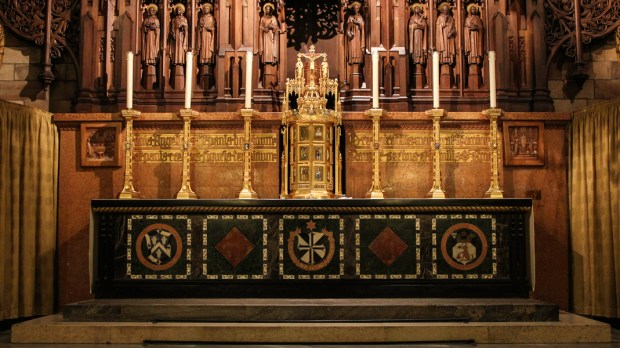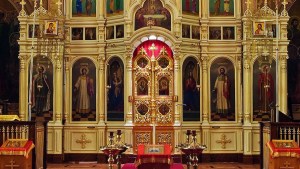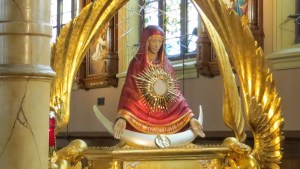In every Catholic church there is a sanctuary, the place where the primary actions of the Mass are conducted.
The word “sanctuary” is generally defined as a location that is “holy,” “sacred,” or “set apart.”
In many ways the Catholic sanctuary was designed to mimic the holy of holies in the Jerusalem temple. It was the place where only the priests were allowed to offer sacrifice to God.
The holy of holies was separated from the rest of the temple by a veil, making the actions of the priest invisible to the rest of the people.
Initially this concept was carried out (and still is in Byzantine churches) with an iconostasis, an entire wall that blocked the sanctuary from view.
This wall was also seen in some Roman Catholic churches, though over time it was gradually reduced, and the altar railis the last remaining remnant of this tradition in the West.
Additionally, the sanctuary is further set apart from the rest of the church by the presence there (in most churches) of the tabernacle, the small box that houses the consecrated Eucharistic hosts. This is indicated by a red lamp that notifies everyone of the presence of God.
The sanctuary is a holy and sacred place, reserved for a specific function and is designed to facilitate our worship of God.



